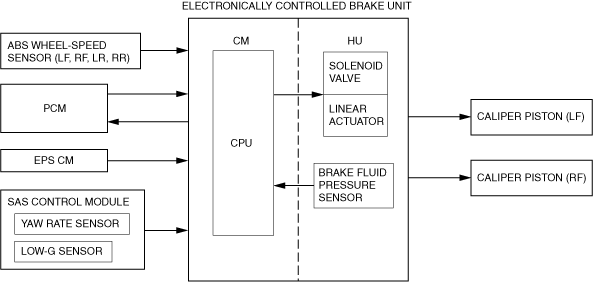TCS CONTROL
id041900701800
Outline
• The TCS control actuates torque reduction through electric motor control, as well as using brake control to control traction.
-
Note
-
• Electric motor control: Electric motor output is lowered by EV system output control to reduce the traction, preventing driving wheel slip.
• Brake control: Brake fluid is pressurized from the electronically control brake unit against the driving wheel that is slipping to apply the brakes, preventing driving wheel slip.
Features
• The left and right wheels are controlled at the same time by electric motor control. Therefore, when the road surface friction coefficients differ between the left and right wheels, proper torque reduction cannot be performed separately for each wheel. If this occurs, the left and right wheels are separated and torque reduction is actuated by brake control to assure further vehicle stability.
• The TCS OFF switch allows the driver to optionally enable/disable the TCS control at the driver's discretion.
-
― When both wheels are stuck, the TCS control is inhibited to control the driving force by the driver’s operation.
― When the main power is switched from ON to OFF, the TCS control automatically returns to the permit status.
Construction
Block diagram
Operation
• TCS control detects driving wheel spin based the following signals listed below, sends torque reduction request signals to the PCM, and also controls the solenoid valves and linear actuator in the electronically controlled brake unit.
-
― Wheel speed signals from front and rear ABS wheel-speed sensor
― Electric motor torque signal from PCM
― Steering angle signal from EPS CM
― Yaw rate and lateral-G signals from SAS control module
― Fluid pressure signal from brake fluid pressure sensor (built into electronically controlled brake unit)
